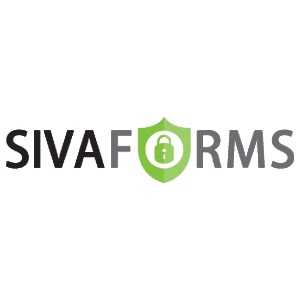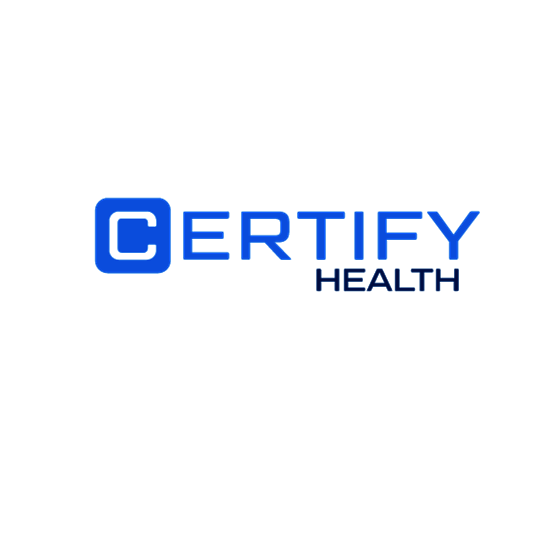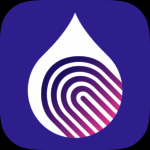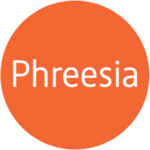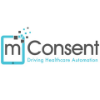What Is Patient Intake Software?
Patient intake software is a digital system that automates and simplifies the process of acquiring and managing patient information during the first stages of a healthcare visit. This program enables healthcare providers to collect patient data online, including personal and medical history, insurance information, and consent forms. This not only saves time and minimizes errors, but it also enhances the overall patient experience.
Patient intake software allows healthcare facilities to tailor their intake forms, ensuring that only relevant and necessary information is captured from each patient. This function not only alleviates the strain on patients, but it also allows medical personnel to rapidly and properly retrieve critical patient data. Furthermore, patient intake software is compatible with electronic health records (EHR) and practice management systems, allowing for smooth data transmission.
This reduces the need for manual data entry while simultaneously ensuring that patient information is securely maintained and easily accessible to authorized staff. Furthermore, patient intake software frequently includes features like appointment scheduling, online patient portals, and electronic signature capabilities, which improve the efficiency and convenience of the intake process.
By investing in patient intake software, healthcare providers can increase the accuracy and efficiency of their intake process, cut administrative costs, and improve the overall patient experience. Ultimately, this can lead to higher patient satisfaction, improved workflow, and better patient outcomes. So, if you want to improve your healthcare practice, patient intake software is an essential tool.
What Are The Recent Trends In Patient Intake Software?
In recent years, the healthcare industry has increased its use of technology to expedite procedures and improve patient care. Patient intake software is one area where considerable developments have occurred. This software enables medical offices and facilities to easily collect and maintain patient information, eliminating manual processes and improving the overall patient experience. One of the most noticeable changes in patient intake software is the shift to cloud-based solutions.
This enables quick accessibility and real-time changes, allowing healthcare providers to manage patient data from anywhere and at any time. Cloud-based software is also scalable and flexible, making it ideal for practices of all sizes. Another trend in patient intake software is the incorporation of AI and machine learning (ML) capabilities.
These advanced technologies allow the program to auto-populate patient information, verify insurance coverage, and detect any medical errors or discrepancies in data. This not only saves time, but also reduces the likelihood of errors, resulting in more accurate and efficient patient treatment. Additionally, patient intake software is becoming more user-friendly and customized.
This implies that each practice or facility can customize the program to meet their individual requirements, resulting in a more personalized and efficient solution. Features like customisable intake forms, appointment scheduling, and automatic reminders help to optimize the patient intake process. Many patient intake software suppliers are working on improving patient engagement and communication.
This includes features that allow patients to complete intake forms remotely, access their medical records, and connect with healthcare providers using secure messaging. This not only enhances the patient experience, but it also expedites the intake process and fosters better collaboration between patients and healthcare providers. Finally, data security and compliance are important issues for patient intake software. As healthcare data breaches continue to make news, providers are focusing on HIPAA compliance and installing security measures to secure patient information.
Many patient intake software solutions now provide safe data storage, encryption, and regular backups to ensure the confidentiality and integrity of patient information. Overall, these patterns show how patient intake software is always improving to meet the changing demands of the healthcare business. As a buyer, you must examine these trends and characteristics when comparing software options to ensure you select the solution that best meets your practice's needs and provides the best experience for your patients.
Benefits Of Using Patient Intake Software
Patient intake software is a crucial tool for any healthcare facility that wants to expedite the intake process and improve the overall patient experience. This program automates the gathering and maintenance of patient data, removing the need for manual documentation and lowering the likelihood of human error. Aside from these obvious benefits, there are numerous other advantages to adopting patient intake software that should be considered before making a purchase decision.
1. Quicker Check-In Process: One of the key advantages of adopting patient intake software is how quickly people can check in. Patients can use this program to complete their intake forms online before arriving at the office, minimizing wait times and increasing efficiency. This also allows administrative workers to focus on other activities, increasing overall productivity.
2. Enhanced Accuracy And Data Security: Patient intake software reduces the need for manual data entry, lowering the likelihood of errors and guaranteeing that patient information is entered correctly. Furthermore, this software enables secure storage and access to patient data, safeguarding sensitive information and guaranteeing HIPAA compliance.
3. Customizable Forms: Many patient intake software choices have customizable forms that can be tailored to the unique requirements of a healthcare organization. This enables a more tailored and efficient intake procedure, as well as the potential to collect specific data that may be relevant to the facility's operations.
4. Integration With The Electronic Health Records (EHR): Integrating patient intake software into an EHR system can increase its value. This enables the smooth transfer of patient data, avoiding the need for duplicate data entry and ensuring that all relevant information is available to healthcare professionals.
5. Cost Savings: Implementing patient intake software can also save money for healthcare organizations. By lowering administrative work and enhancing efficiency, facilities can save money on labor and enhance their bottom line.
6. Improved Patient Engagement: Patient intake software can also boost patient participation by allowing them to participate in their own care. Online forms allow patients to check and amend their information, giving them a sense of ownership and control over their healthcare.
Important Factors To Consider While Purchasing Patient Intake Software?
When it comes to selecting patient intake software, there are several important elements to consider in order to make the best choice for your healthcare practice. These variables include not only the software's features and functionalities, but also your budget and practice requirements.
Here are some crucial considerations to consider while selecting patient intake software:
1. Customization And Integration: The first and most important factor to evaluate is how well the software can be tailored to the specific demands of your clinic. This includes the ability to interact with your current electronic health records (EHR) system and any other third-party applications you may use. A software that is adaptable and easy to integrate will speed up the patient intake process and guarantee that data flows smoothly between systems.
2. Usability: Both your staff and patients should find the software easy to use. This will shorten the learning curve while saving time and effort on training and implementation. Look for software with a user-friendly interface and features like drag-and-drop form builders, pre-populated data fields, and straightforward navigation.
3. Security And Compliance: Patient intake software handles sensitive personal and medical information, therefore ensuring its security and compliance is critical. Check that the software complies with all applicable healthcare rules and regulations, such as HIPAA and GDPR, and that it has strong data security safeguards like encryption and regular backups.
4. Features And Functionalities: Patient intake software should provide features and functionalities that will simplify the intake process and improve the patient experience. Look for features like online appointment scheduling, electronic signatures, automated insurance verification, and mobile data capture for patients.
5. Pricing: As with any purchase, cost is a significant consideration. Consider your budget and the benefits that the program will bring to your firm. Some patient intake software vendors charge by subscription, while others may charge a one-time cost. Make sure you understand all of the costs involved with the program, including setup fees, service prices, and any potential add-ons.
6. Customer Service: Reliable and effective customer service is critical to the successful operation of any software. Look for software companies who give 24-hour customer assistance and have a reputation for offering quick and effective service.
What Are The Key Features To Look For In Patient Intake Software?
When it comes to managing patient intake, healthcare professionals must have a well-organized and efficient system in place. Here is where patient intake software comes in handy. With so many alternatives available on the market, it can be difficult for consumers to select the best fit for their practice.
To make an informed decision, here are the essential elements to look for in patient intake software:
1. Customizable Forms: Each healthcare practice has distinct needs, and patient intake forms are no exception. Look for software that lets you design personalized forms to collect pertinent patient information. This not only saves time but also ensures that data is collected accurately.
2. Electronic Signature: Forms no longer need to be signed manually. Look for software that enables patients to electronically sign intake forms. This not only saves paper but also makes the process easier for all parties.
3. Integration With Electronic Health Records (EHR): In today's digital world, it is critical that patient intake software integrate with EHR systems. This will ensure that patient data is seamlessly transferred from intake forms to medical files, minimizing the need for manual data entry and lowering the risk of errors.
4. Mobile-Friendly: As technology advances, patients anticipate greater ease and flexibility. Choose software that is mobile-friendly or can be accessed via a mobile app. This will allow patients to complete forms at their leisure, even before their visit.
5. Real-Time Analytics: One advantage of adopting patient intake software is the ability to examine data. Look for software that offers real-time analytics, allowing you to gain insights into patient demographics, satisfaction levels, and other useful indicators to help you improve your practice.
6. HIPAA Compliance: Patient intake forms contain sensitive information, therefore software must be HIPAA compliant. To protect patient data, look for software that includes strong security mechanisms and strictly follows HIPAA requirements.
7. User-Friendly Interface: A user-friendly interface is beneficial to both consumers and healthcare providers. Choose software that is straightforward and simple to use, allowing patients to complete intake forms quickly and easily, and healthcare providers to handle data with ease.
Why Do Businesses Need Patient Intake Software?
Patient intake software is vital for healthcare firms for a number of reasons. These include optimizing the entire patient intake process, increasing efficiency, improving the patient experience, and minimizing errors. First and foremost, patient intake software enables organizations to streamline the entire intake process. This program simplifies and expedites registration, scheduling, and information gathering for both new and existing patients.
The elimination of manual paperwork and data entry saves time and effort for both patients and healthcare workers. Furthermore, patient intake software boosts productivity by automating operations like appointment reminders, insurance verification, and intake forms. This not only minimizes staff workload, but it also assures that all required information is collected accurately and on time. The adoption of patient intake software can significantly improve the patient experience. Patients can simply complete important documentation ahead of their visit using tools such as online forms, which reduces wait times and increases convenience.
Furthermore, the program may save patient information for future visits, making the process even more seamless. Another significant advantage of patient intake software is the reduction of mistakes. Automated data entry and electronic records reduce the possibility of human error while transcribing crucial information. This not only saves time, but also guarantees the accuracy and security of patient information.
How Much Time Is Required To Implement Patient Intake Software?
The deployment time for patient intake software varies according to your practice's individual needs and requirements. However, a flawless and effective integration can take between 4 and 8 weeks on average. The first setup normally consists of installing and configuring the software, which can take up to a week to ensure that all capabilities are tailored to your practice's individual workflows and requirements.
The next step is data migration, which involves transferring your existing patient records and information to the new platform. This could take many weeks, depending on the size and complexity of your data. Once the data migration is completed, comprehensive testing is performed to confirm that the program is operational and that all data has been moved appropriately.
This is followed by training sessions for your employees to become comfortable with the software's features and functioning, which can take anywhere from a few days to a week depending on the size of your workforce. Finally, after the software is fully established and your team has been taught, there will be a period of transition and adjustment during which your employees may require some time to acclimate to the new system.
This stage may take many weeks, but with adequate training and assistance, the shift can be smoother and faster. Overall, the installation time for patient intake software may appear long, but it is critical to ensuring a smooth and seamless integration into your practice's everyday operations. Working closely with the software vendor and investing in appropriate training and support can assist accelerate the installation process and optimize the program's benefits for your practice.
What Is The Level Of Customization Available In Patient Intake Software?
The level of flexibility possible with patient intake software varies tremendously depending on whose software you use. However, most credible patient intake software systems provide extensive flexibility to fit the specific demands of various medical practices and facilities. Intake forms, questionnaires, and patient portals are some of the most common areas where customization is allowed.
These tools can be customized to collect data pertaining to a particular medical specialization or practice. This not only provides a more efficient and accurate intake procedure, but also allows for more individualized care and treatment strategies for each patient. Another significant part of customizing patient intake software is its ability to interact with existing electronic health record (EHR) systems.
This enables smooth data sharing and streamlines the entire patient intake procedure. Additionally, many patient intake software systems allow you to design workflows and protocols. This implies that the software may be tailored to the individual intake processes and procedures of a given practice, resulting in a smooth and efficient intake experience for both patients and staff.
It's also worth mentioning that some patient intake software allows for significant customization, such as branding and style changes, as well as the ability to add custom fields and templates. When choosing patient intake software, you should evaluate your individual requirements as well as the level of customization provided by each system. This can help you select software that may be adjusted to your specific practice and improve the whole patient intake process.
Which Industries Can Benefit The Most From Patient Intake Software?
Patient intake software is an effective tool for speeding the patient registration process, minimizing errors, and increasing overall efficiency in healthcare facilities. While the benefits are obvious in any medical setting, certain companies can gain even more from deploying this software. So, which industries would profit the most from patient intake software?
Let's investigate.
1. Hospitals And Clinics: Hospitals and clinics manage a significant number of patients on a daily basis, making the patient registration procedure time-consuming and error-prone. This process can be automated using patient intake software, freeing up staff time to focus on patient care instead of paperwork. It also helps clinics to collect and preserve correct patient data, speed insurance verification, and improve the entire patient experience.
2. Private Practices: Like hospitals and clinics, private practices can greatly benefit from patient intake software. This software simplifies the intake process, allows for safe data storage, and enhances communication between patients and practitioners. Private clinics typically have fewer teams, and with patient intake software, they may manage intake more efficiently without investing in additional administrative staff.
3. Urgent Care Facilities: Urgent care facilities serve patients who require emergency medical attention, thus a quick and effective intake process is essential. Patient intake software can assist these hospitals in gathering patient information rapidly, verifying insurance, and prioritizing urgent cases. This can substantially shorten wait times and enhance the overall patient experience.
4. Mental Health Facilities: As the number of people seeking treatment has increased, so has the amount of paperwork and administrative chores required. Mental health facilities can use patient intake software to streamline and automate the intake process, freeing up staff to focus on providing quality treatment to their patients. It also assures the safe preservation of sensitive patient data.
5. Rehabilitation Institutions: Because rehabilitation institutions handle complex medical histories, correct patient information is critical. Patient intake software automates the collecting and organization of patients' medical records, making them easier for personnel to access and update. It also allows rehabilitation facilities to give individualized treatment strategies for each patient.
Conclusion
Finally, selecting the appropriate patient intake software is critical to increasing the efficiency and effectiveness of healthcare facilities. It simplifies the intake process while simultaneously ensuring accurate and secure data capture. When looking for patient intake software, there are various variables to consider, including features, integrations, pricing, and customer support.
It is critical to conduct extensive study and analyze many possibilities to locate the one that best meets your personal requirements and budget. Furthermore, evaluate the security features and compliance with industry requirements such as HIPAA. This ensures the confidentiality of critical patient information and avoids potential legal complications. Overall, investing in the correct patient intake software can help your hospital save time and money while also improving the patient experience and efficiency. Take the time to properly consider your options and make an informed decision to improve your healthcare operations.


